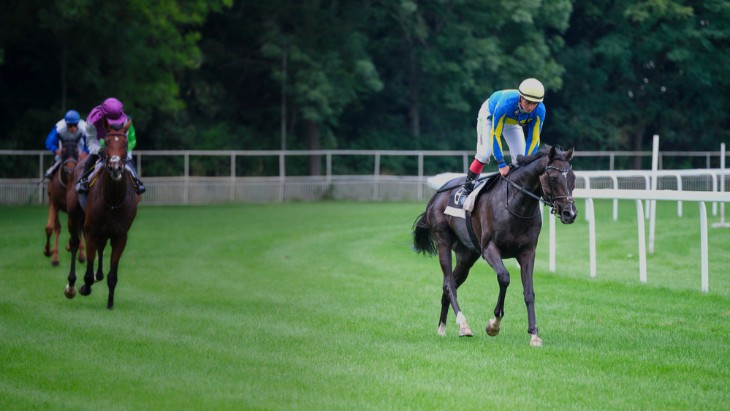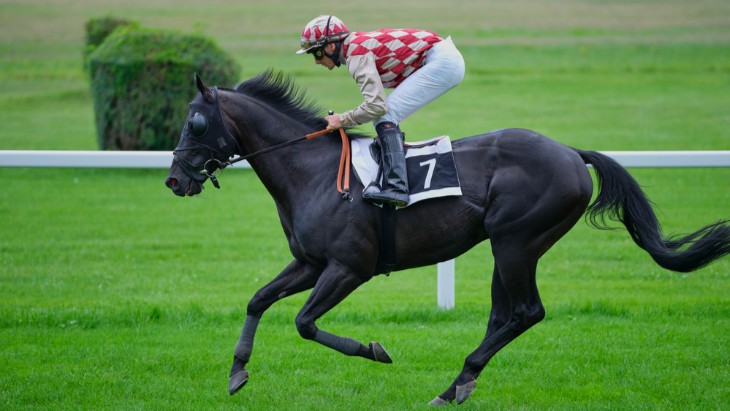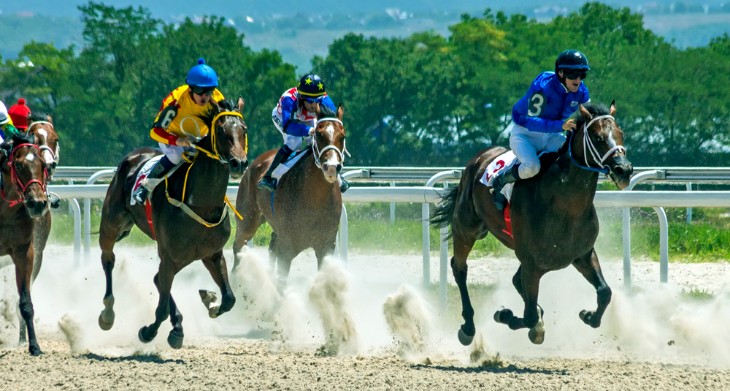- Understanding Equine Heat Tolerance
- The Role of Humidity in Horse Racing Performance
- Guidelines for Temperature Thresholds in Racing
- Assessing Track Conditions and Heat Impact
- Monitoring Horse Health Pre-Race
- Racing Strategies in High Temperatures
- The Importance of Hydration and Cooling Techniques
- Adapting Training Regimens for Heat
- The Impact of Heat on Jockey Well-being
- Conclusion
Understanding Equine Heat Tolerance
Heat tolerance in horses is a crucial factor in determining their ability to perform under hot weather conditions. Equine physiology is uniquely adapted to manage body heat, but there are limits to this capacity. The thermoregulatory system in horses includes sweating and increased respiration, which help to dissipate heat. However, when the ambient temperature rises significantly, these mechanisms can become less effective, leading to an increased risk of heat stress. Factors such as breed, age, fitness level, and acclimatization play significant roles in how well a horse can tolerate high temperatures.
In studying equine heat tolerance, researchers focus on the horse's ability to maintain a stable internal temperature in the face of external heat challenges. A critical aspect of this research is understanding the thermal neutral zone – a range of ambient temperatures where a horse can maintain normal body temperature without expending additional energy. When temperatures rise above this zone, horses need to use more energy to cool themselves, which can impact their performance and well-being. It's important for trainers and veterinarians to understand these aspects to make informed decisions about racing in hot conditions.
The Role of Humidity in Horse Racing Performance
The impact of humidity on horse racing performance is often understated. Humidity plays a vital role in how horses cope with heat, as it directly affects the efficiency of their cooling mechanisms. When humidity levels are high, the air is saturated with moisture, making it difficult for a horse to cool itself effectively through sweating. This inefficiency can lead to a rapid increase in body temperature, posing serious health risks.
Factors that contribute to the impact of humidity on racing performance include:
- Sweating Efficiency: Horses rely heavily on sweating to cool down. High humidity impedes the evaporation of sweat, diminishing its cooling effect.
- Respiratory Stress: Horses also cool down through respiration. Humid conditions can make breathing more difficult, leading to respiratory distress.
- Heat Accumulation: In humid conditions, horses are more prone to accumulate heat, as their body's natural cooling mechanisms struggle to cope.
Understanding the interplay between temperature and humidity is crucial for the safety and performance of horses in races. Monitoring these environmental factors helps in making informed decisions about whether to proceed with racing events and what precautions are necessary to protect the welfare of the horses.
Guidelines for Temperature Thresholds in Racing
Establishing temperature thresholds for horse racing is essential to ensure the safety and well-being of the horses. Regulatory bodies in various countries have set different temperature limits, taking into account local climate conditions and equine physiology. These thresholds are based on extensive research that considers how different temperatures affect equine performance and health. The key is to determine at what point the ambient temperature becomes detrimental to the horse, potentially leading to heatstroke or other heat-related complications.
Temperature thresholds are not just a single figure; they often involve a range of temperatures, considering factors such as humidity and wind speed. For instance, a lower temperature threshold may be set on a day with high humidity compared to a dry day. These guidelines are crucial for trainers, veterinarians, and race organizers, as they provide a clear indicator of when it might be unsafe to race. Adherence to these thresholds is fundamental in promoting equine welfare and maintaining the integrity of the sport.

Assessing Track Conditions and Heat Impact
The condition of the race track plays a significant role in how heat affects a horse race. Different track surfaces react differently to heat, influencing not only the performance of the horses but also their risk of injury. For example, dirt tracks can become harder in extreme heat, increasing the impact on the horses' legs, while synthetic tracks may retain more heat, affecting the microclimate around the track surface.
Key considerations in assessing track conditions in hot weather include:
- Surface Temperature: The temperature of the track surface can significantly exceed the ambient air temperature, especially in direct sunlight.
- Track Hardness: Heat can cause tracks to harden, potentially leading to increased risk of injury for the horses.
- Dust and Air Quality: Dry, hot conditions can lead to dusty tracks, impacting air quality and potentially affecting the respiratory health of the horses and jockeys.
Regular monitoring of track conditions, including temperature and surface hardness, is vital in making informed decisions about racing in hot weather. This assessment helps in implementing necessary adjustments, such as watering the track to reduce heat retention and dust, thereby maintaining safer racing conditions.
Monitoring Horse Health Pre-Race
Monitoring the health of horses before a race is particularly critical during hot weather. This pre-race check involves a series of evaluations to ensure that each horse is fit to race under the prevailing conditions. Veterinarians typically look for signs of heat stress, dehydration, or any other health issues that could be exacerbated by the heat. These checks are not only a matter of welfare but also of safety, as an unfit horse can pose a risk to itself and others during the race.
Key aspects of pre-race health monitoring include:
- Hydration Status: Assessing the horse's hydration level is essential. Signs of dehydration include a dry mouth, sunken eyes, and decreased skin elasticity.
- Vital Signs: Monitoring vital signs such as heart rate, respiratory rate, and temperature helps in determining the horse’s readiness for the race.
- Behavioural Signs: Changes in behaviour, like lethargy or irritability, can be early indicators of heat stress or other health issues.
It's vital for trainers and race officials to make informed decisions based on these assessments. If a horse shows any signs of being unfit for the race, it should be withdrawn to prevent potential harm.
Racing Strategies in High Temperatures
Developing effective racing strategies in high temperatures is essential for the success and safety of both the horse and the jockey. Trainers and jockeys need to adapt their tactics to accommodate the challenging conditions. This includes adjusting pacing strategies, considering the additional physiological stress on the horse. In extreme heat, it might be prudent to aim for a steadier pace rather than pushing the horse to its limit, as overheating can lead to serious health complications.
Another strategic consideration is the positioning of the horse during the race. For instance, being in the pack can lead to increased heat exposure due to the limited airflow. Therefore, jockeys might opt for positions that allow for better air circulation, helping the horse maintain a lower body temperature. Post-race strategies are equally important, with immediate attention to cooling down the horse being a priority. This includes providing adequate hydration, shade, and cooling techniques like hosing down the horse with water. These strategies are not just about maintaining performance but also about ensuring the welfare of the horses under challenging weather conditions.
The Importance of Hydration and Cooling Techniques
Hydration and effective cooling techniques are vital in managing horses' health and performance in hot weather conditions. Ensuring that horses are well-hydrated before, during, and after the race is critical to prevent dehydration and heat stress. Dehydration can significantly impair a horse's performance and can lead to serious health issues such as heatstroke or colic. Therefore, access to clean and fresh water is essential, and additional electrolyte supplementation might be considered to replace what is lost through excessive sweating.
Key methods to maintain proper hydration and effective cooling include:
- Water Access: Providing constant access to fresh water to ensure that horses can drink as needed.
- Electrolyte Balance: Monitoring and supplementing electrolytes to compensate for those lost through sweating.
- Cooling Stations: Setting up cooling stations with misters or fans, especially near the finish line and the paddock area.
- Post-Race Cooling: Implementing immediate post-race cooling strategies such as cold-water hosing or walking in shaded areas.
These practices help in maintaining the horse’s core body temperature within a safe range, thereby reducing the risks associated with overheating.

Adapting Training Regimens for Heat
Adapting training regimens to accommodate high temperature conditions is essential for the safety and well-being of racehorses. This adaptation involves altering training schedules, intensity, and duration to suit the hotter climate. Training during the cooler parts of the day, such as early morning or late evening, can help in minimizing heat exposure. The intensity of workouts may also need to be reduced, with a greater focus on maintaining fitness rather than pushing the horses to their limits.
The adaptation of training regimens in hot weather also includes:
- Acclimatization: Gradually exposing horses to warmer conditions to allow their bodies to adapt to the heat.
- Monitoring Workload: Carefully monitoring the horses' response to training and adjusting workload accordingly to avoid overexertion.
- Regular Health Checks: Conducting regular health checks to monitor the horses for any signs of heat stress or dehydration.
By carefully adapting training practices, trainers can ensure that horses maintain their fitness without being put at undue risk of heat-related health issues. This approach not only safeguards the horses’ health but also contributes to their overall performance in races conducted under hot weather conditions.
The Impact of Heat on Jockey Well-being
The well-being of jockeys in hot weather conditions is as crucial as the health of the horses they ride. High temperatures can severely impact a jockey's performance, concentration, and overall health. Factors such as dehydration, heat exhaustion, and heat stroke are serious concerns. Jockeys, like the horses, are athletes, and their ability to perform optimally is significantly influenced by the weather conditions. Therefore, it is essential for jockeys to take preventive measures to protect themselves from the adverse effects of high temperatures.
Strategies for ensuring jockey well-being in hot weather include:
- Hydration: Jockeys need to maintain proper hydration before and during races. This includes drinking water and possibly sports drinks that replenish electrolytes.
- Lightweight Clothing: Wearing lightweight, breathable clothing can help in reducing heat retention and improving comfort.
- Rest and Recovery: Sufficient rest periods between races and training sessions are important to prevent heat exhaustion and allow the body to recover.
It is important for race organisers and regulatory bodies to consider the health of the jockeys by providing necessary facilities such as shaded areas, cooling zones, and adequate hydration stations. Additionally, guidelines may be set to modify race schedules or implement breaks during extremely hot conditions to protect the jockeys’ health.
Conclusion
In conclusion, managing the impact of hot weather on horse racing requires a multifaceted approach. It involves understanding the physiological limits of horses, adapting training and racing strategies, ensuring proper hydration and cooling, and establishing clear regulatory policies. The global racing community has a wealth of diverse strategies and experiences to draw from, and sharing this knowledge can lead to better practices worldwide.
For more information:








